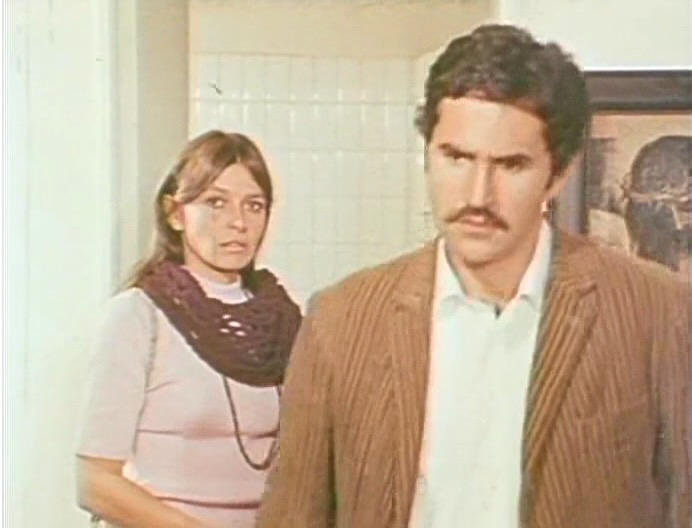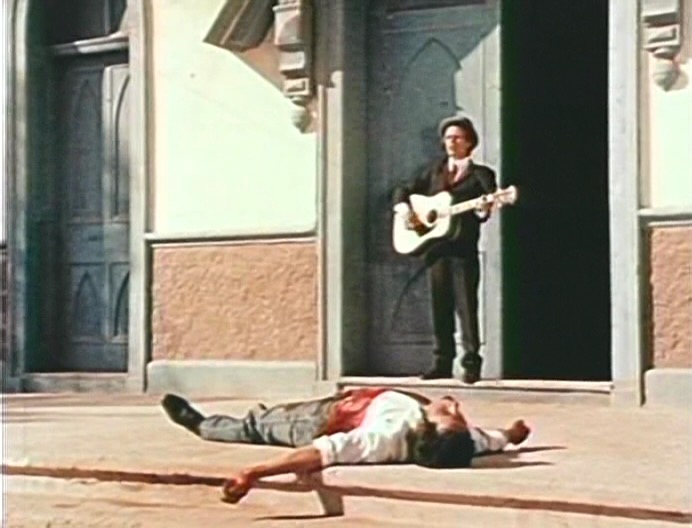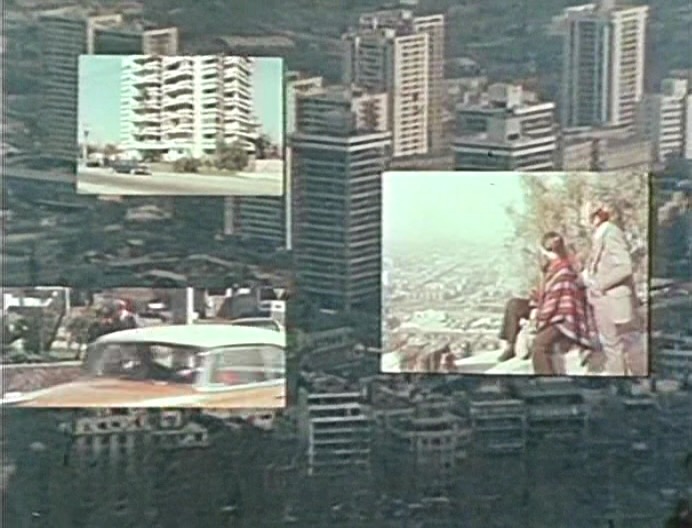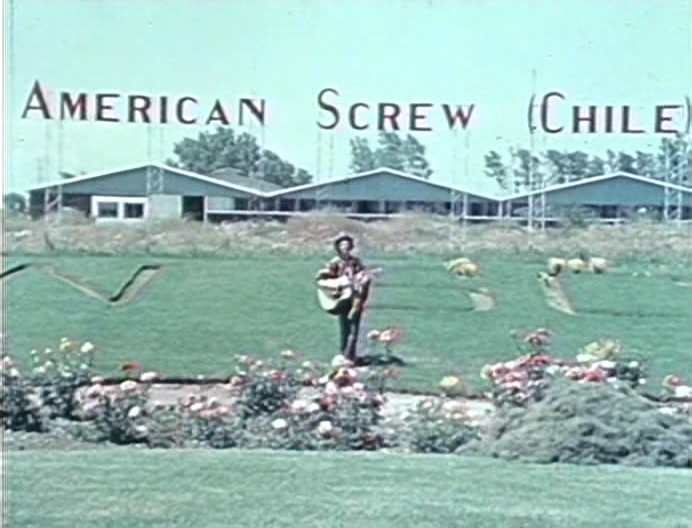I’m up to the “Left and Revolutionary Cinema” chapter of the Vogel book. Creating a fictional scenario around a real election with pop-up folk songs by Country Joe & The Fish – a Chilean Medium Cool, but not really visually or narratively interesting. Suzanne leans communist, her friends lean militant, they ask for her help kidnapping Balding Martin who has been following her around, but the plot goes bad due to a dirty informant and people get shot by the police.
Suzanne and her doomed commie conspirator friend:


Nice to have the DVD interview with Landau, who’s the source of the “CHILL-y-un” pronunciation. He says it was semi-improvised from a written framework with doc footage added, admits stealing from Brecht and Godard, doesn’t mention Medium Cool, though Landau and Wexler would codirect a film in Chile the following year so surely that came up. Balding Martin starred in Beware! The Blob the same year, popped up in minor roles in Hollywood pictures, just about everyone else showed up in the very early (and very late) Ruiz films. If the wikis can be believed, this played Cannes Director’s Fortnight with Emitai, Land of Silence and Darkness, Oshima’s Dear Summer Sister, The Death of Maria Malibran, and Emperor Tomato Ketchup.
































